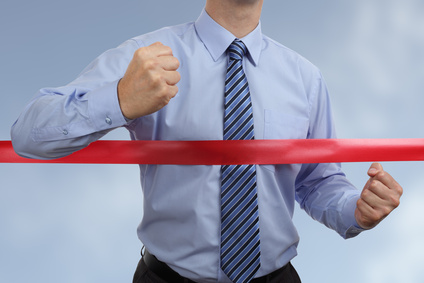In trading, as in the long race, the turtle consistently beats the hare.
In last week’s article about overtrading, I noted that in a study of 66,000 active traders, only those whose trading frequency was in the bottom quintile (80% less than the busiest traders), were able to beat the S&P 500.
In active trading, why would less be so much more? Brain research on peak performance in athletes points us toward an interesting answer.
Trading, AnExtreme Sport?
Most coaches advise their clients to approach trading as a business. This is usually a mistake. Phenomenologically, active trading is much more like an extreme sport or a military operation than a business. Simply put, the experience of active trading is unusually stressful.
In business, many go broke within five years, but in active trading you can get the same result in five months, five weeks or five days.
The reason is that in trading we are called upon to both analyze a fluid situation and take action in an environment that is time-compressed. This highly intensive state is the same state found in extreme sports, gunfights, and moments of high mental or physical drama.
We intrinsically understand that making good decisions and taking appropriate action when time is running out is the ultimate human challenge. This is why we enjoy watching Tom Cruise, Daniel Craig, or Angelina Jolie take on and win the challenge on the big screen, and why we are awestruck watching Laird Hamilton surf monster waves in real life.
Way Beyond The Slow Turtle
Clearly, however, Tom, Daniel, Angelina, and Laird have little in common with the slow turtle.
That said, don’t misinterpret their lightning-fast thinking and behavior as the simple expression of pure adrenaline. Much more is going on.
Brain research on peak performing athletes suggests that in the heat of battle, the best athletes are incredibly calm. In fact, their brain waves are in a low alpha/high theta state that resembles meditation. It’s why they describe the state as being “in the zone” or “in flow.”
The Bottom Line
Traders can benefit from finding the “flow state,” as well. One key to achieving flow is to match the challenge to your skill level. Flow occurs most often when both these factors are not only balanced, but also near their maximum. In other words, flow is likely to happen when we have a tough challenge that we are, in fact, capable of handling.
If your trading experience is chaotic, overwhelming, painful, or, perhaps, daunting, intimidating, and scary, you won’t experience flow and you won’t achieve your optimum potential as a trader.
#####
For more information on trading psychology, click here.




